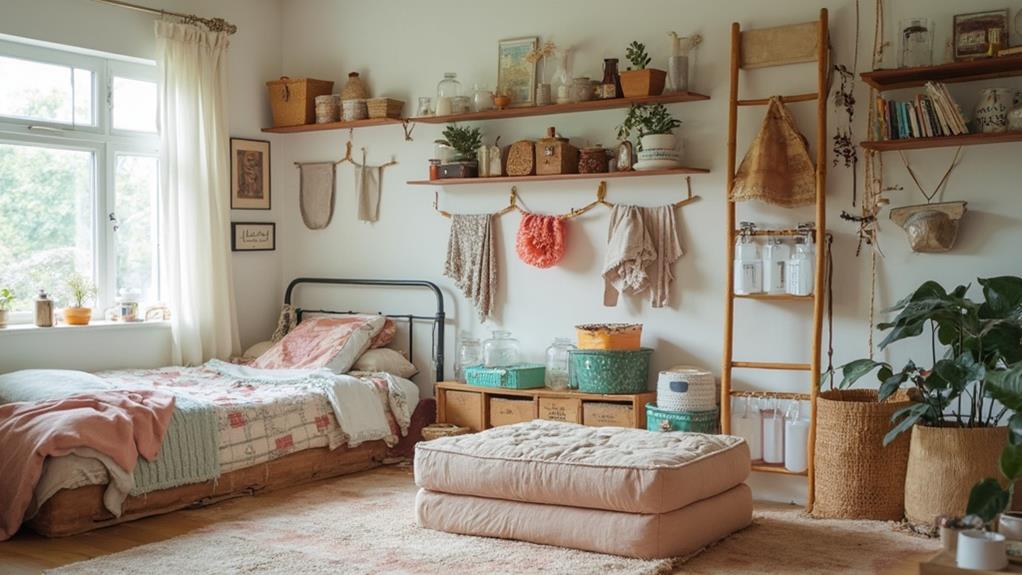Organizing your home on a budget requires creativity and resourcefulness. Start by repurposing everyday items, such as using mason jars for small storage or old crates as shelving. DIY solutions like building floating shelves or under-bed storage boxes can save money. Maximize vertical space with wall-mounted shelves and over-the-door organizers. Shop smart by prioritizing versatile storage solutions and taking advantage of sales. Zone your living areas to group related items efficiently. Declutter systematically, letting go of unnecessary possessions. Explore hidden storage opportunities, like utilizing space under beds or inside hollow furniture. These savvy strategies can transform your home without breaking the bank.
Repurpose Everyday Items
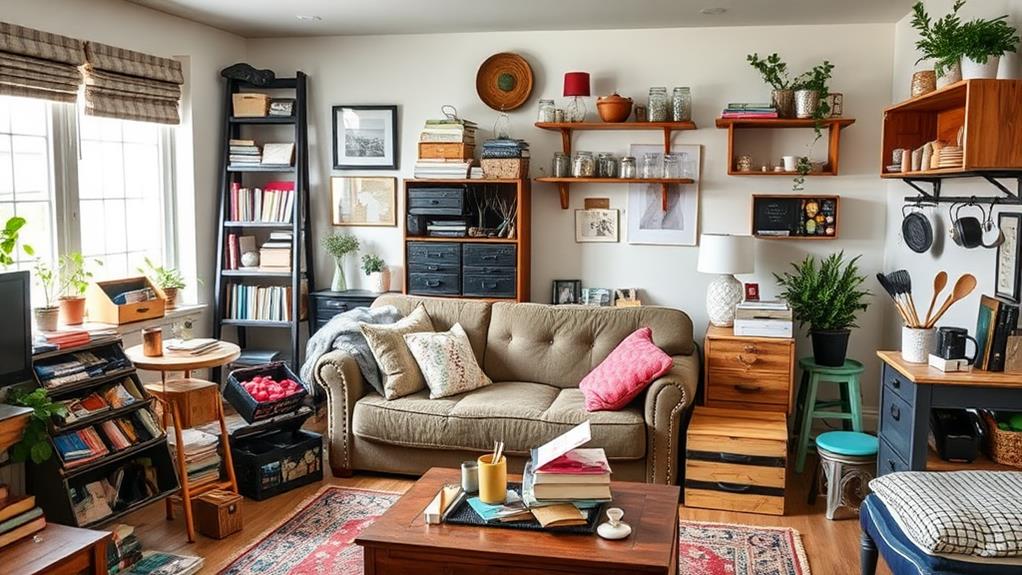
Repurposing everyday items is a cost-effective strategy for organizing your home. This approach not only saves money but also reduces waste and promotes creativity. Common household objects can be transformed into functional storage solutions with minimal effort and expense.
Mason jars, for instance, can be repurposed as organizers for small items like office supplies, craft materials, or bathroom essentials. Old wooden crates or pallets can be turned into rustic shelving units or wall-mounted storage. Tension rods, typically used for curtains, can be installed in cabinets to hang cleaning supplies or create additional space for pots and pans.
Repurposing extends to larger items as well. An old ladder can become a unique bookshelf or towel rack. Vintage suitcases can be stacked to create a stylish side table with hidden storage. Even outdated kitchen appliances, like an old refrigerator, can be repurposed as a tool shed in the garage.
When repurposing, consider the item's durability, size, and potential uses. With some creativity and basic DIY skills, everyday objects can be transformed into practical storage solutions, helping to declutter and organize your home without breaking the bank.
DIY Storage Solutions
Creating your own storage solutions can be both cost-effective and tailored to your specific needs. By utilizing basic materials and tools, you can craft custom storage options that maximize space and organization in your home. One popular DIY project is building floating shelves using wood planks and brackets, which can be easily customized to fit any wall space and hold various items.
Another simple yet effective solution is constructing under-bed storage boxes using plywood or repurposed dresser drawers. These can be fitted with casters for easy access and provide ample space for storing seasonal clothing or bedding.
For closet organization, consider creating a custom shoe rack using PVC pipes cut to size and assembled in a tiered structure.
In the kitchen, make use of vertical space by installing a pegboard on an empty wall to hang pots, pans, and utensils. Additionally, repurpose mason jars or tin cans as attractive countertop storage for frequently used items like cooking utensils or office supplies.
For bathroom organization, mount wooden crates or baskets on the wall to store toiletries and towels, maximizing space in smaller bathrooms.
Maximize Vertical Space
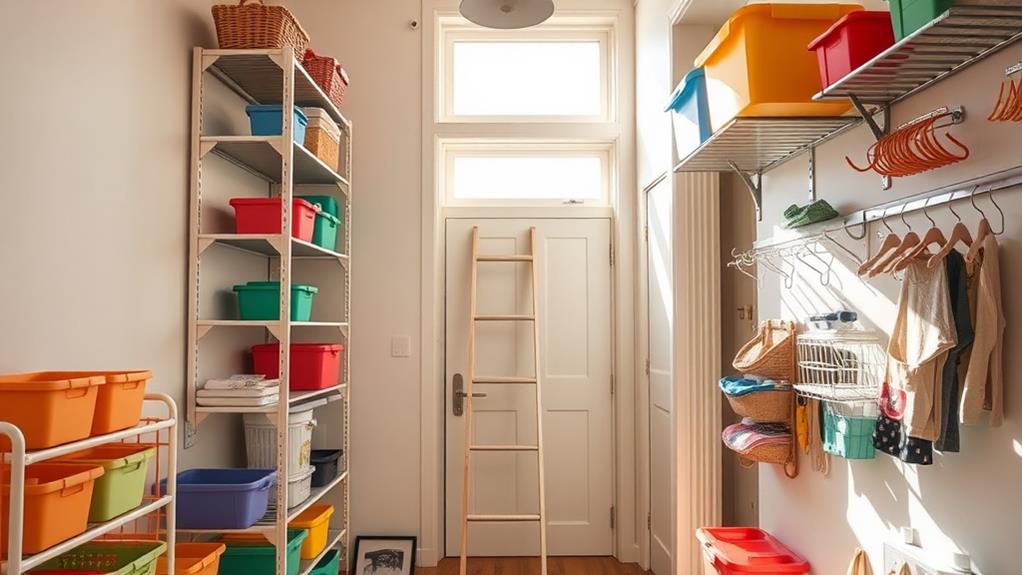
Vertical space often goes underutilized in many homes, presenting a valuable opportunity for budget-conscious organizers. By maximizing vertical space, homeowners can significantly increase storage capacity without expanding their living area. Wall-mounted shelves are an excellent starting point, offering versatile storage options for books, decorative items, and everyday essentials.
Install floating shelves in kitchens, bathrooms, and living areas to keep surfaces clutter-free while displaying frequently used items.
Over-the-door organizers are another cost-effective solution for maximizing vertical space. These hanging systems can transform the back of doors into storage havens for shoes, accessories, or cleaning supplies. In closets, consider adding a second clothing rod to double hanging space for shorter items.
Utilize the area above kitchen cabinets for rarely used appliances or decorative storage baskets. For those with high ceilings, tall bookcases or floor-to-ceiling storage units can make the most of otherwise wasted space. In garages or basements, ceiling-mounted storage racks offer an ideal solution for bulky items or seasonal gear.
Smart Shopping for Organizers
Smart shopping for organizers is essential to maintaining a budget-friendly approach to home organization. To maximize your resources, consider multi-purpose items that serve various functions throughout your home. Look for versatile storage solutions like stackable bins, adjustable shelving units, and expandable drawer organizers that can adapt to different spaces and needs.
Take advantage of sales, clearance events, and seasonal discounts to purchase organizers at reduced prices. Many retailers offer significant savings during back-to-school seasons or post-holiday periods. Compare prices across different stores and online platforms to ensure you're getting the best deal. Don't overlook second-hand options, such as thrift stores or online marketplaces, where gently used organizers can be found at a fraction of their original cost.
Before purchasing new organizers, assess what you already have at home. Repurpose everyday items like mason jars, shoeboxes, or old baskets for storage. DIY solutions can be both cost-effective and personalized to your specific needs. When shopping, prioritize quality over quantity to avoid frequent replacements. Invest in durable materials that will withstand regular use and maintain their functionality over time.
Zone Your Living Areas
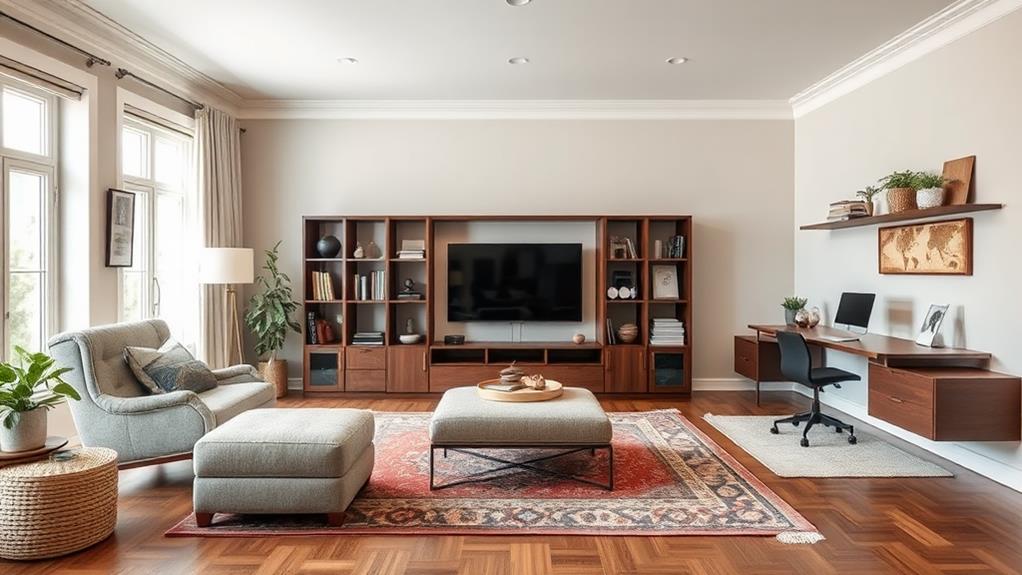
Effective home organization extends beyond smart shopping to the strategic arrangement of your living spaces. Zoning your living areas is a cost-effective approach that maximizes functionality and minimizes clutter. Begin by assessing each room's purpose and dividing it into specific zones based on activities. For example, in a living room, create distinct areas for entertainment, reading, and conversation.
Implement this strategy by grouping related items together within each zone. In a home office, designate separate areas for computer work, filing, and creative tasks. Use vertical space efficiently with wall-mounted shelves or pegboards to keep frequently used items accessible. In the kitchen, establish zones for food prep, cooking, and cleaning to streamline workflow.
Utilize multi-functional furniture to delineate zones without sacrificing space. A bookshelf can serve as a room divider while providing storage. In bedrooms, use nightstands with drawers or under-bed storage containers to maximize space. For children's rooms, create play, study, and sleep zones to encourage organization habits. By zoning your living areas, you'll create a more organized, efficient home without significant financial investment.
Declutter With Purpose
Decluttering with purpose is a fundamental step in organizing your home on a budget. This process involves systematically evaluating your belongings and making intentional decisions about what to keep, donate, or discard. Start by focusing on one room or area at a time to avoid feeling overwhelmed.
As you sort through items, ask yourself critical questions: Is this useful? Does it bring joy? Have I used it in the past year?
Create three distinct piles: keep, donate, and discard. Be ruthless in your decision-making, letting go of items that no longer serve a purpose in your life. For sentimental objects, consider taking photos before parting with them. This allows you to preserve memories without cluttering your space.
Once you've sorted your belongings, find appropriate homes for the items you're keeping. Utilize vertical space with shelving units or over-the-door organizers. Repurpose everyday items like mason jars or shoeboxes for cost-effective storage solutions. By decluttering with purpose, you'll create a more organized and functional living space without breaking the bank.
Hidden Storage Opportunities
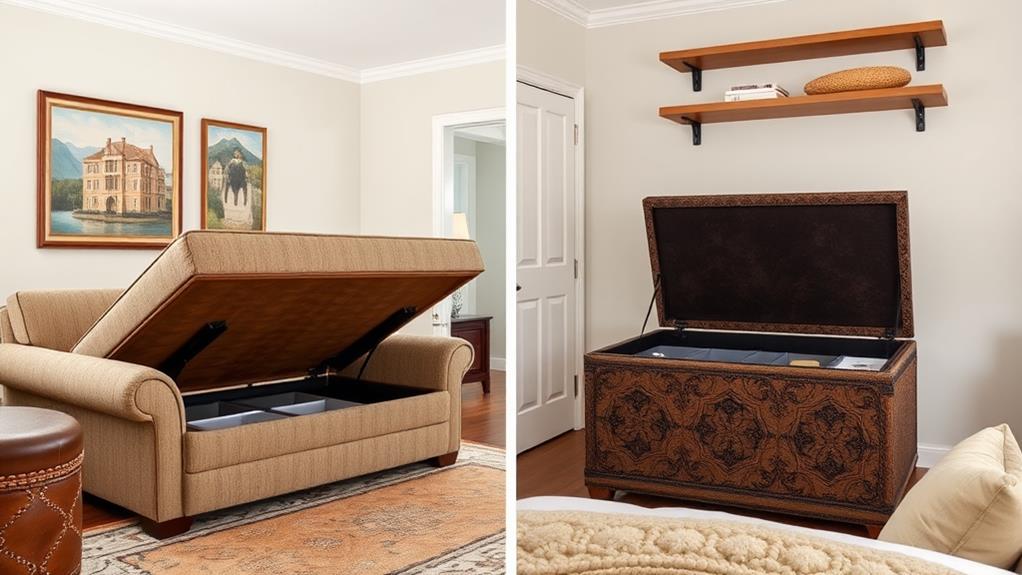
After decluttering your space, the next step in budget-friendly home organization is to maximize hidden storage opportunities. Look for unconventional areas that can be repurposed for storage.
Utilize the space under beds by using low-profile containers or bed risers to create additional room. Install floating shelves in corners or above doorways to display decorative items while freeing up floor space.
Consider vertical storage solutions, such as over-the-door organizers for pantries, closets, or bathrooms. Make use of the inside of cabinet doors by attaching small hooks or racks for storing cleaning supplies or spices. Hollow ottomans or coffee tables with built-in storage can serve dual purposes as both seating and storage.
In the bedroom, use tension rods to create a second clothing rod in closets, effectively doubling hanging space. Repurpose old ladder rungs as towel racks or magazine holders.
In the kitchen, magnetic strips can hold knives and metal utensils, freeing up drawer space. Finally, don't overlook the potential of furniture with hidden compartments, such as storage benches or headboards with built-in shelving.
Frequently Asked Questions
How Often Should I Reassess My Home Organization System?
Reassessing your home organization system should be done regularly, ideally every 3-6 months. This allows you to adapt to changing needs, eliminate inefficiencies, and maintain an orderly living space. Seasonal changes often prompt natural reassessment opportunities.
What's the Best Way to Label Storage Containers for Easy Identification?
Time is money when it comes to finding items. Use clear, waterproof labels with bold text. Consider color-coding for categories. Digital labels with QR codes offer detailed information. Consistency in labeling style across containers enhances efficiency.
How Can I Involve My Family in Maintaining an Organized Home?
Involving family in home organization can be achieved by assigning specific tasks, creating a chore chart, setting clear expectations, and implementing a reward system. Regular family meetings to discuss progress and address challenges can also foster a sense of shared responsibility.
Are There Apps or Digital Tools to Help With Home Organization?
Studies show 82% of smartphone users rely on organization apps. Numerous digital tools can aid in home organization, including popular apps like Sortly, HomeZada, and Centriq. These apps offer features for inventory management, task scheduling, and decluttering guidance.
How Do I Organize Sentimental Items Without Cluttering My Living Space?
To organize sentimental items without cluttering, consider selective display rotation, digital preservation, shadow boxes, or dedicated storage solutions. Choose meaningful pieces to showcase, while storing others in labeled containers in less-used spaces like attics or under-bed storage.
Conclusion
Efficient home organization need not be a costly endeavor. Through creative repurposing, DIY solutions, and strategic use of vertical space, even budget-conscious individuals can achieve a clutter-free environment. Like a well-oiled machine, a systematically organized home functions more smoothly and enhances overall quality of life. By implementing smart shopping practices, zoning living areas, purposeful decluttering, and uncovering hidden storage opportunities, anyone can transform their living space into an organized sanctuary without breaking the bank.
